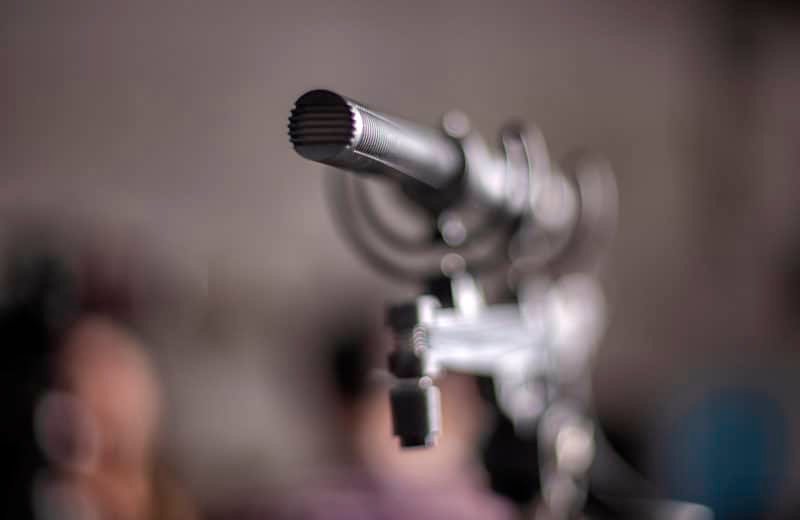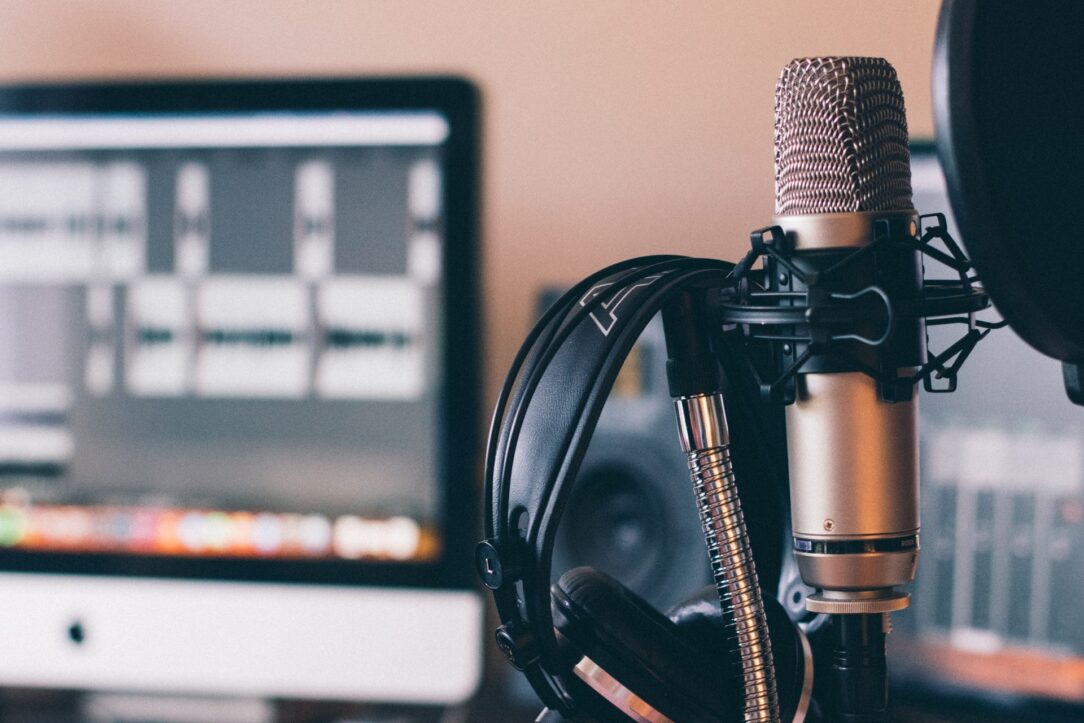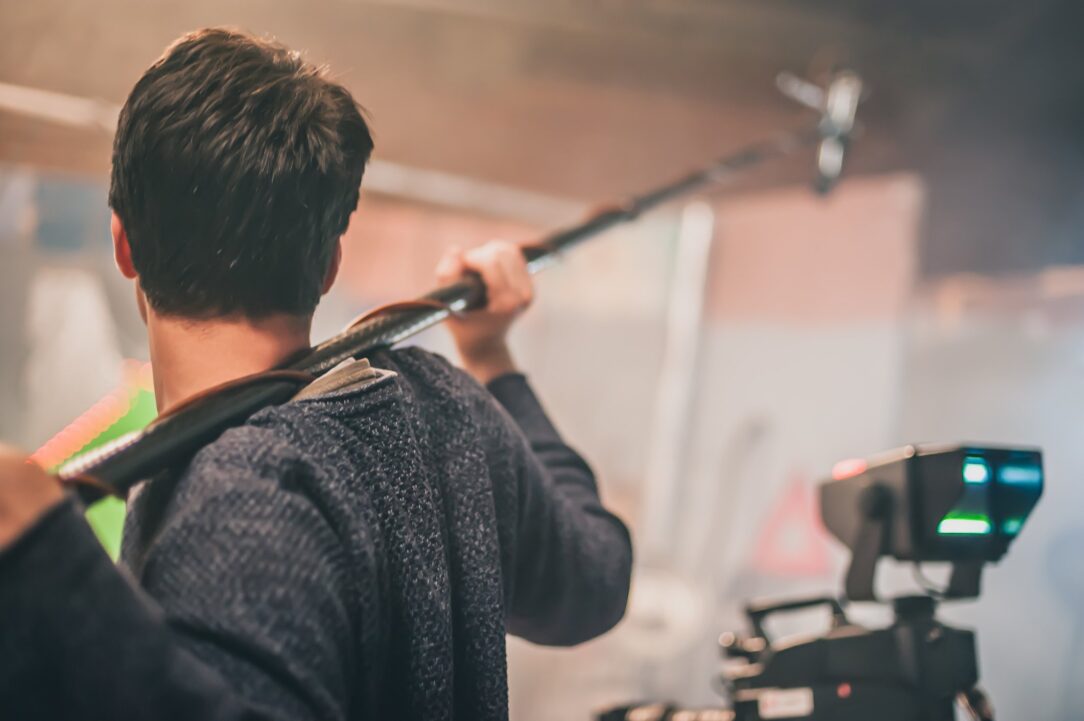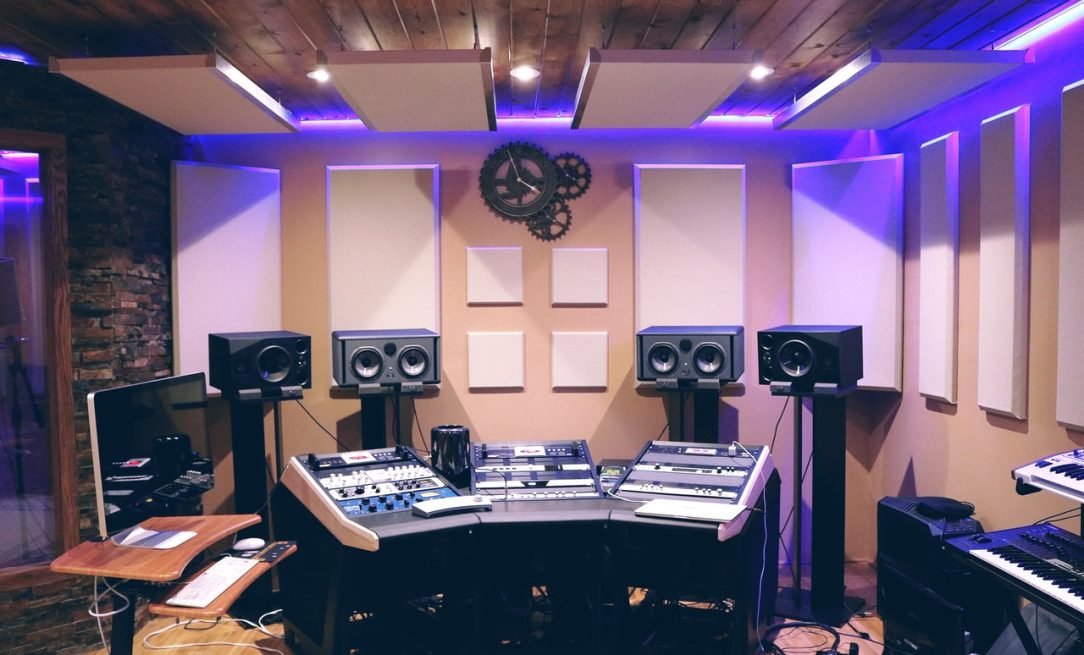A shotgun mic is the industry standard in more ways than one. Far from it that they’re perfect, but seeing how they’re universally used by radio hosts and moviemakers – it’s safe to say that they’re good at what they do.
But, seeing how none of us are professional movie makers or radio hosts (although perhaps we’re aspiring to be one), we’ve decided to go over some useful tips on making a shotgun mic record better dialogue sound. So, let’s not waste any more time, and let’s just get straight into it.
What’s A Shotgun Microphone?

Source: producerhive.com
A shotgun microphone is a type of directional microphone. As we’ve already said, this kind of mic is most often used in movie or television production, but since we live in an era of YouTube, Twitch streaming and vlogging, it’s safe to say that shotgun mics have found their way into the lives of regular people.
The defining feature of a directional mic is its ability to focus, process and amplify sounds directly in front of it, without picking up too much ambient noise or sounds from the sides (like an omnidirectional mic would).
As such, a shotgun mic should be ideal for recording dialogue, and in more ways than one, it is. However, it’s not that simple. There are still things you need to do in order to get the best sounding audio quality. Just getting a high-quality mixer and an XLR shotgun mic for streaming won’t cut it. On that note – here are some tips.
Get A Better Microphone

Source: instagram.com
We know we’ve literally just said that getting a good microphone isn’t enough for getting best-sounding dialogue audio – but it’s a start. Getting a good microphone will be a great foundation that you will build upon with the tips that follow.
A word of advice – don’t concern yourself with getting the latest and greatest gear on the planet. With the right set-up, proper placement, and some other tweaks, the best budget shotgun mic can sound as good as the most luxurious, premium microphone on the market.
On that note, SYNCO, a Chinese microphone manufacturer, provides more than a couple of great microphones that you can find here and possibly add one of them to your production to help with your dialogue sound quality.
Get A Better Pair Of Headphones

Source: unsplash.com
If you might think that headphones don’t have anything to do with the dialogue sound quality, well, you’re right. However, without proper-sounding headphones or IEMs – you can’t know whether your mic sounds good or not. Here’s why.
Imagine you’ve gone out for the day to film a vlog. You’ve bought a shotgun mic for iPhone, and you’re planning on making a video on the go. Well, unless you test your mic beforehand, you won’t know whether it is working properly or not. Maybe the battery’s dead, or the iPhone interference is too strong. Either way, you won’t know until you’re finished recording everything, and you get back home to listen to it. And, at that point, it won’t really matter because there’s nothing you’ll be able to do.
Record In A Quiet Environment

Source: juicedlink.com
While it is true that a shotgun mic pickup pattern is unidirectional, meaning the microphone won’t pick up too much ambient noise – a noisy environment is still going to affect the quality of sound. Despite being directional, a shotgun microphone will also pick up on some sounds from all directions, which could interfere with the quality of the dialogue you’re trying to record.
So, if possible, try and record your sound in a quiet whenever you can. We understand that might not be possible if you’re shooting out in the open with a shotgun mic for DSLR camera, but if you’re working on a podcast, for example, don’t have your GPU mine Ethereum while you’re recording unless you want the sound of the overclocked fans muddying up your recording.
Work On Microphone Placement
As we’ve said earlier, getting a good mic is a solid foundation, but it’s these tricks that will make your dialogue sound go from good to excellent, and one of the best tips we could give you is to learn how to properly position your microphone.
For a studio setting, a shotgun mic stand is a must. A stand will help you position your microphone perfectly. You’ll get to point it in the optimal direction, and you won’t have to worry too much about possible discrepancies in sound quality that could occur if you were to keep the mic in your hand.
Another thing regarding the mic placement has to do with its actual placement in the room or space you’re recording in. As you know, sound bounces off of surfaces (we’ll get to that in just a second), which means that placing a shotgun microphone next to the flat surface like a wall isn’t going to yield the best results. The sound of your voice will bounce from the wall and back into the mic, which will not make your dialogue sound muddy and echoey.
Pad The Room

Source: unsplash.com
Another neat trick to improve the dialogue sound quality is to record the sound in a well-insulated environment. It doesn’t even have to be that quiet, but unless you want echoes and hollow-sounding voice – you’ll need to pad the room you’re recording in.
You could buy the most expensive camera shotgun mic in the world and point it to your speaker from 15 cm away, but if you’re recording in an empty, abandoned warehouse – the sound quality’s going to be tragic, to say the least.
Now, we understand that you can’t quite pad the entire warehouse if you plan on recording there, but your at-home studio can be treated in a way to stop the sound of your voice from bouncing off the walls. You won’t even need sound panels. Just add enough soft surfaces and furniture to the room, and you should be golden.
Conclusion:
We didn’t want to get too technical with our advice, as you can see. Mainly, it’s because we’re firm believers in getting the basics down first, but also because when you get to the advanced stuff, you’re pretty much dealing with details that not everyone’s going to notice.
Anyway, we hope you’ve found these tips useful. Hopefully, we’ve managed to teach you a thing or two.




